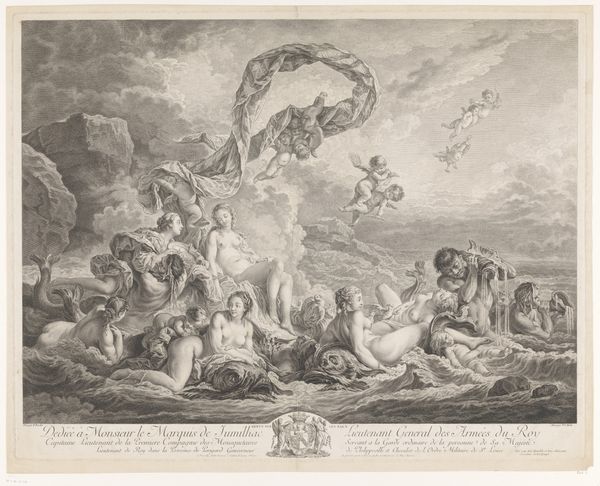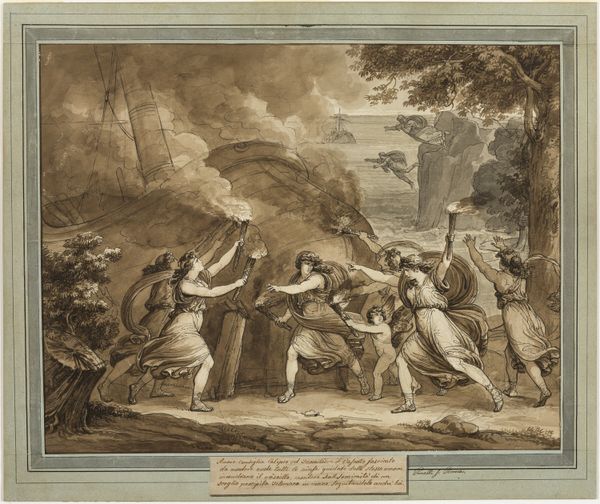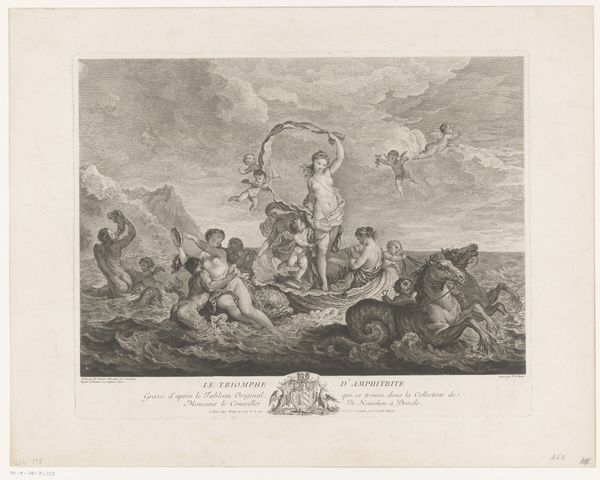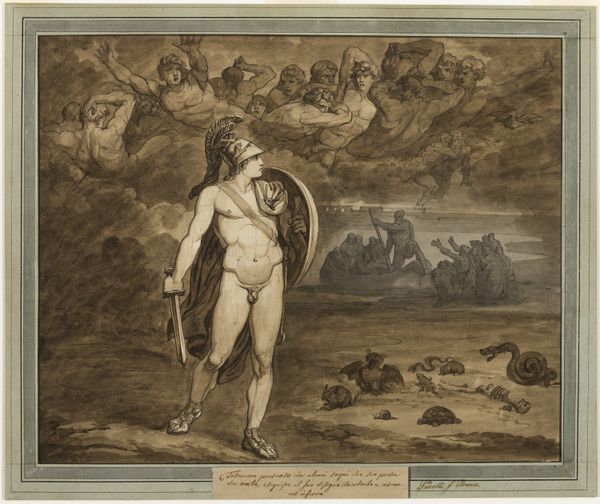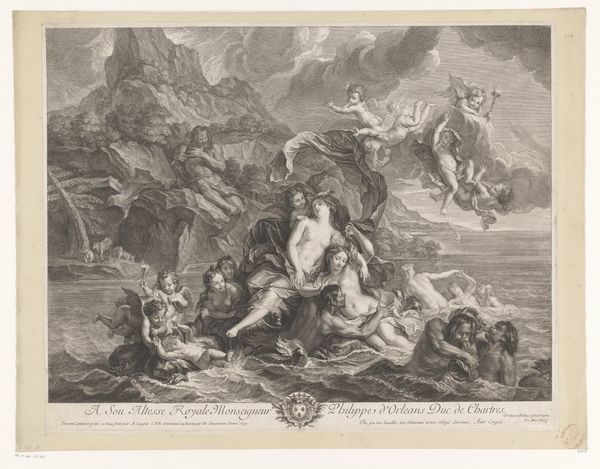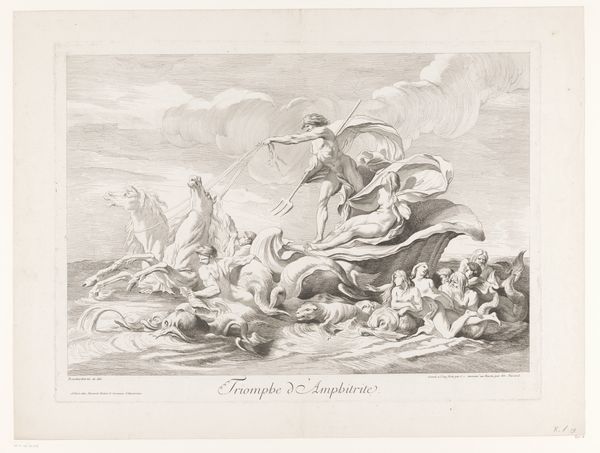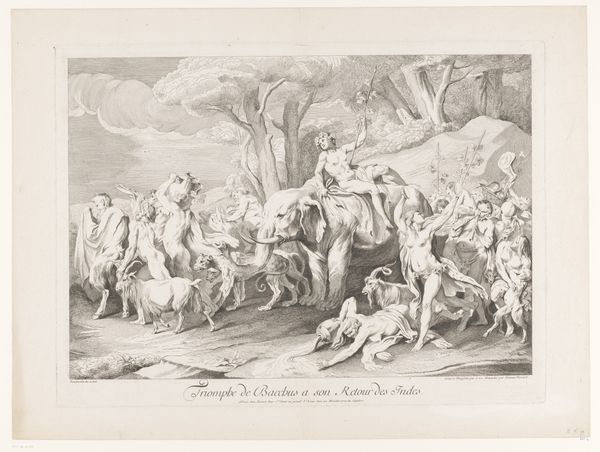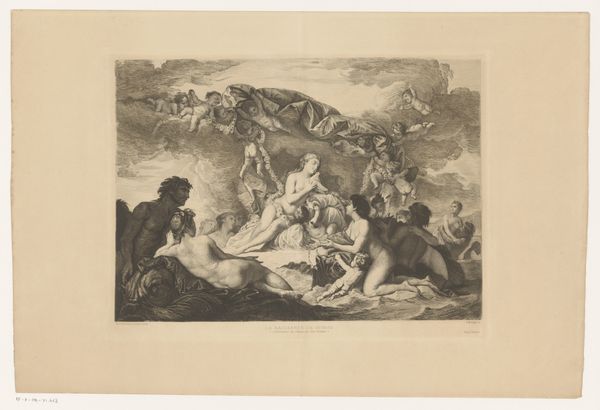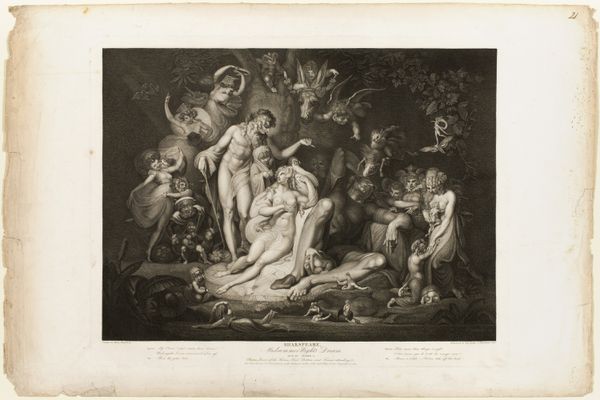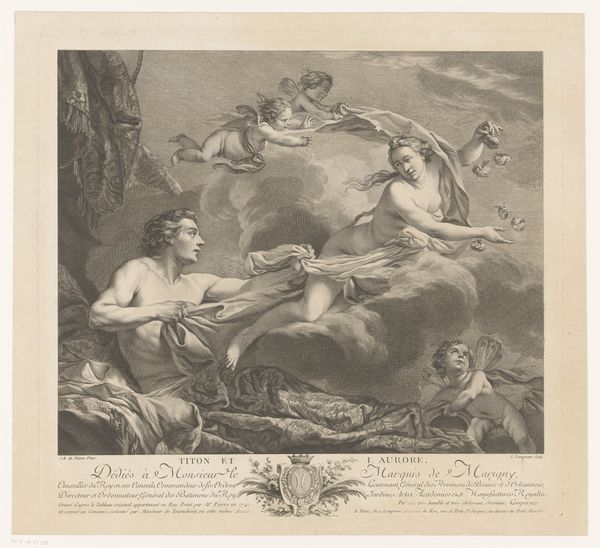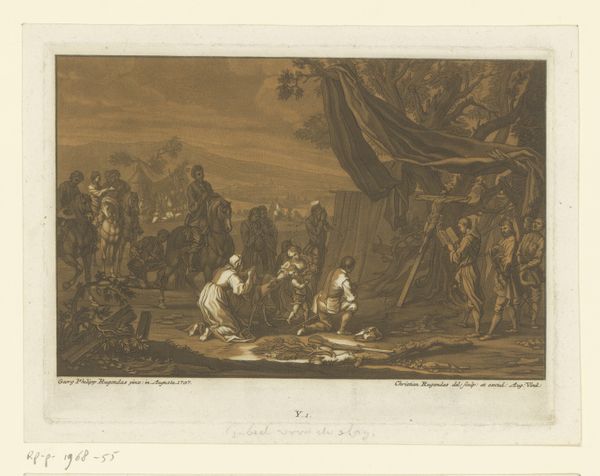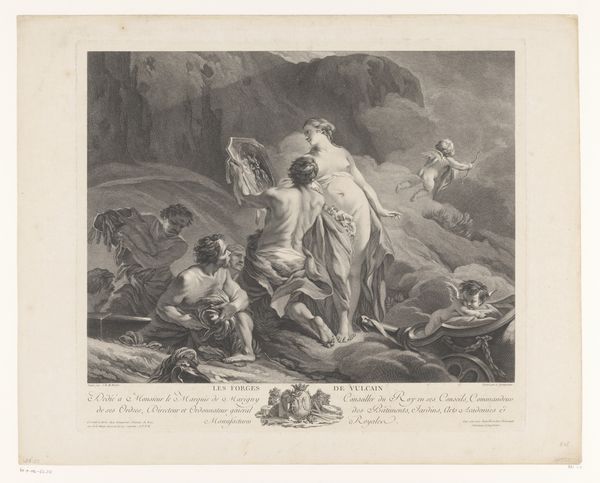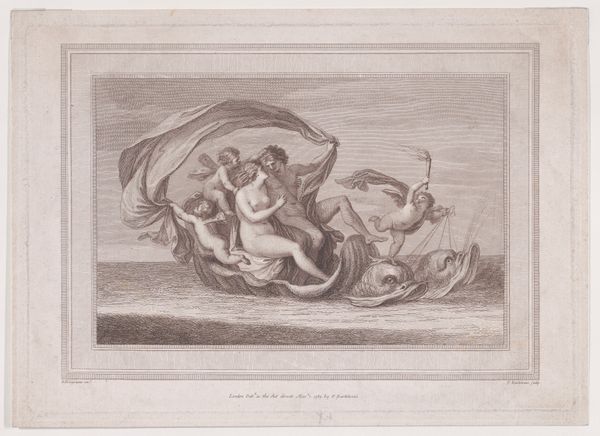
The Dream of Telemachus, from The Adventures of Telemachus, Book 4 1808
0:00
0:00
drawing, print, paper, ink
#
drawing
#
neoclacissism
#
allegory
#
narrative-art
# print
#
landscape
#
figuration
#
paper
#
ink
#
history-painting
Dimensions: 458 × 579 mm
Copyright: Public Domain
Curator: Here we have Bartolomeo Pinelli’s, "The Dream of Telemachus," dating to 1808, a work currently residing here at the Art Institute of Chicago. It is executed in ink wash on paper. What are your first impressions? Editor: It's quite striking. A blend of the serene and the turbulent. There's a very palpable tension between the vulnerable figure of Telemachus asleep, the stormy sea below and then these soaring, divine figures above. The ship with the crowd reminds me that he's on a journey. Curator: Precisely. Pinelli was fascinated with antiquity, and this drawing illustrates a scene from Fénelon's "The Adventures of Telemachus." He positions Telemachus between his earthly struggles and this beckoning allegorical dream. It speaks volumes about the societal values placed on myth and heroism during the Neoclassical period. The narratives that circulated, especially for young men. Editor: And I find myself immediately drawn to the socio-political implications of choosing this particular scene. Telemachus seeking his father; there’s such weight in patriarchal legacies and inherited power, isn't there? Who has the right to seek out such legacies and what’s the symbolic burden it suggests for audiences of this era, and perhaps even today? Curator: The drawing style also reflects a very self-conscious positioning within the history of art. It almost appears like a print. This would give it greater accessibility, widening the distribution of the images, the narrative, and also, of course, the ideals inherent in the myth. Editor: Yes, but what’s fascinating is the very deliberate construction of power through this artistic interpretation of this specific scene. The goddess Athena looming large as a figure of guidance, contrasting to other figures draped in much lighter cloth and then those characters huddled in the boat. It's very strategic use of the mythology here and is deeply compelling to examine. What do you think Pinelli hopes the audiences see when faced with it? Curator: I believe Pinelli aimed to ennoble contemporary society by associating it with the virtues of the ancient world. He creates a lineage that elevates the present, legitimizing its power structures through historical allusion. Editor: Well, for me it invites us to critically examine these enduring narratives of power, prompting us to consider who gets to dream, who dictates those dreams, and whose stories get told in the grand scheme of history. It is unsettling, indeed.
Comments
No comments
Be the first to comment and join the conversation on the ultimate creative platform.
